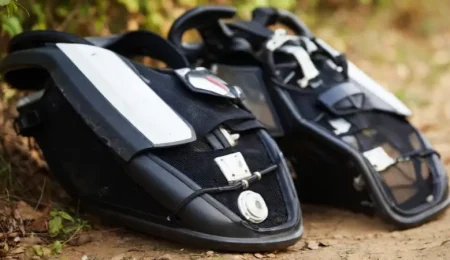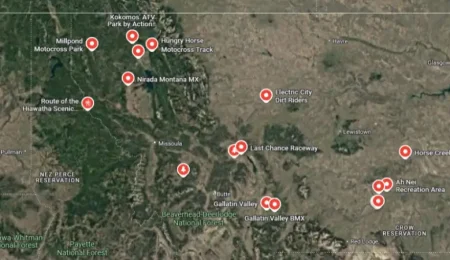You should change your dirt bike transmission oil every 10-15 hours of riding. Frequent oil changes ensure your bike runs smoothly and lasts longer.
Dirt biking is a thrilling adventure. But, it demands proper maintenance. One crucial aspect is changing the transmission oil. Fresh oil keeps the engine parts well-lubricated and reduces wear. It also helps in maintaining the bike’s performance. Neglecting this can lead to costly repairs and breakdowns.
So, it’s vital to know the right schedule for oil changes. In this guide, we’ll explore why and how often you should change your dirt bike transmission oil. This helps in keeping your bike in top condition for every ride.
Importance Of Transmission Oil
The importance of transmission oil in your dirt bike cannot be overstated. Transmission oil plays a crucial role in ensuring your bike runs smoothly. It helps maintain the optimal performance and longevity of your bike’s engine and transmission components. Regularly changing the transmission oil can prevent costly repairs and keep your bike in top condition.
Role In Dirt Bike Performance
Transmission oil lubricates the internal components of your dirt bike. This reduces friction and wear. It helps keep the gears shifting smoothly. This ensures the overall performance of your dirt bike remains optimal. Without proper lubrication, the gears can grind and cause serious damage.
Potential Issues From Old Oil
Old or dirty transmission oil can lead to several problems. It can cause the gears to wear out faster. This can result in poor bike performance. Over time, the oil can accumulate dirt and debris. This makes the oil less effective at lubricating the gears. It can also cause overheating, which can damage the engine and other components.
Regularly changing your transmission oil helps avoid these issues. It ensures your bike performs at its best. It prolongs the life of your engine and transmission.
Factors Affecting Oil Change Frequency
Understanding how often you should change your dirt bike’s transmission oil is crucial. Several factors influence the oil change frequency. This section will explore these factors and help you determine the best schedule for your bike.
Riding Conditions
Riding conditions greatly affect how often you should change the oil. Riding in dusty or muddy environments can cause more debris to enter the engine. This makes the oil dirty faster. If you ride on rough terrains, the engine works harder. This leads to higher temperatures and quicker oil degradation. For such conditions, frequent oil changes are necessary.
Type Of Transmission Oil
The type of oil you use impacts the change frequency. Synthetic oils generally last longer than conventional oils. They provide better protection and withstand higher temperatures. Mineral oils may need more frequent changes. Always check the manufacturer’s recommendations for the best type of oil.
Manufacturer Recommendations
Manufacturer Recommendations play a key role in determining how often you should change your dirt bike transmission oil. Following these guidelines ensures your bike performs at its best and lasts longer. Adhering to the manufacturer’s advice helps maintain the engine’s health and avoid costly repairs.
Consulting The Owner’s Manual
Consulting the owner’s manual is the first step. The manual offers specific instructions tailored to your bike. It provides details on the type of oil to use and the change interval. This is crucial for maintaining optimal performance.
The manual may recommend changing the oil after a certain number of riding hours. It could also suggest an interval based on mileage. Both methods ensure your transmission stays in good condition.
Common Guidelines
If you cannot access the manual, follow common guidelines. Most dirt bike manufacturers suggest changing the transmission oil every 10-20 hours of riding. This frequency can vary based on how you ride and the conditions you encounter.
For example, if you ride in dusty or muddy conditions, change the oil more often. These elements can contaminate the oil faster, reducing its effectiveness.
Track riding or racing also demands more frequent oil changes. The high stress and heat generated in these activities can break down the oil quicker.
For casual riders on well-maintained trails, the interval might be longer. Always inspect the oil before each ride. Look for signs of contamination or a burnt smell.
In summary, follow the manufacturer’s guidance and consider your riding conditions. Regular oil changes keep your dirt bike running smoothly and extend its lifespan.
Signs It’s Time To Change The Oil
Keeping an eye on the condition of your dirt bike’s transmission oil is crucial. It ensures optimal performance and longevity. But how do you know it’s time for a change? Here are some clear signs that your transmission oil needs attention.
Noticeable Performance Drops
If your dirt bike feels sluggish, it might be due to old oil. Fresh transmission oil helps in smooth gear shifting. It also enhances the overall performance. A drop in speed or response can signal that the oil needs changing. Regular checks can prevent long-term damage.
Unusual Noises Or Grinding
Strange sounds are a clear warning sign. Grinding or unusual noises often point to old or contaminated oil. These sounds occur due to increased friction. Clean oil reduces this friction, ensuring smooth operation. Do not ignore these noises. Immediate action can save you from costly repairs.
Steps To Change Dirt Bike Transmission Oil
Changing the transmission oil in your dirt bike is an essential task. It ensures your bike runs smoothly and lasts longer. Follow these steps to keep your dirt bike in top condition.
Gathering Necessary Tools
Before you begin, gather all the necessary tools. This will make the process smoother and quicker. Here’s a list of what you’ll need:
- Oil drain pan
- Socket wrench set
- New transmission oil
- Funnel
- Clean rags
- Owner’s manual
Having these tools ready will save you time and effort. Refer to your owner’s manual for specific oil recommendations.
Proper Oil Change Procedure
Follow these steps to change your dirt bike transmission oil:
- Warm up the engine: Start the bike and let it run for a few minutes. This helps the oil flow out more easily.
- Place the drain pan: Position the oil drain pan under the drain plug.
- Remove the drain plug: Use a socket wrench to remove the drain plug. Allow the old oil to drain completely.
- Replace the drain plug: Once the oil is drained, replace and tighten the drain plug.
- Add new oil: Use a funnel to pour the new transmission oil into the fill hole. Refer to the owner’s manual for the correct amount.
- Check the oil level: Use the dipstick to check the oil level. Add more oil if needed.
- Clean up: Wipe any spilled oil with clean rags and properly dispose of the old oil.
Following these steps ensures your dirt bike’s transmission oil is changed correctly. Regular oil changes keep your bike performing at its best.
Choosing The Right Transmission Oil
Choosing the right transmission oil for your dirt bike is crucial for its performance and longevity. The correct oil ensures smooth shifting, reduces wear and tear, and maintains optimal engine health. Let’s dive into the essential factors to consider.
Synthetic Vs. Conventional Oils
The choice between synthetic and conventional oils can impact your dirt bike’s performance. Synthetic oils offer better protection and performance, especially in extreme conditions. They also resist breakdown longer, meaning fewer oil changes.
Conventional oils are less expensive but may not provide the same level of protection. They tend to break down faster, requiring more frequent changes. Consider your riding conditions and budget when choosing between synthetic and conventional oils.
Oil Viscosity Ratings
Oil viscosity ratings indicate how thick or thin the oil is. These ratings are crucial for ensuring proper lubrication. Viscosity is measured using two numbers, like 10W-40. The first number (10W) represents the oil’s viscosity in cold temperatures, while the second number (40) represents its viscosity at high temperatures.
Choosing the right viscosity rating depends on your riding conditions and climate. For colder climates, a lower first number (like 5W) ensures the oil flows easily at startup. For warmer climates, a higher second number (like 50) ensures the oil remains thick enough to protect the engine at high temperatures.
Refer to your dirt bike’s manual for the recommended viscosity rating. Using the wrong viscosity can lead to poor performance and potential engine damage.
| Oil Type | Advantages | Disadvantages |
|---|---|---|
| Synthetic Oil |
|
|
| Conventional Oil |
|
|
Maintaining Optimal Oil Levels
Maintaining Optimal Oil Levels in your dirt bike is essential for ensuring its longevity and peak performance. Regular checks and timely changes of the transmission oil can prevent wear and tear, overheating, and costly repairs. Let’s explore some key practices to keep your dirt bike running smoothly.
Checking Oil Regularly
Regularly checking the transmission oil is crucial. It ensures the oil levels are within the optimal range. Follow these steps for a thorough check:
- Park the bike on a level surface.
- Wait for the engine to cool.
- Locate the oil dipstick or sight glass.
- Remove the dipstick, wipe it clean, and reinsert it.
- Remove it again to check the oil level and condition.
Look for signs of contamination or low levels. If the oil appears dark or gritty, it might be time for a change.
Top-up Vs. Full Change
Deciding whether to top-up or fully change the transmission oil depends on its condition and usage. Here’s a quick guide:
| Situation | Action |
|---|---|
| Oil is slightly low but clean | Top-up with the same type of oil |
| Oil is dark or contaminated | Perform a full change |
| Bike has been in extreme conditions | Full change recommended |
A full oil change ensures all contaminants are removed, providing fresh lubrication. This is better for the engine in the long run.
Frequently Asked Questions
How Often Should You Change Dirt Bike Transmission Oil?
Change dirt bike transmission oil every 10-15 hours of riding. Frequent oil changes ensure optimal performance and longevity.
What Happens If You Don’t Change Transmission Oil?
Neglecting to change transmission oil can lead to increased wear, overheating, and potential transmission failure.
Can You Use Car Oil For A Dirt Bike?
Using car oil in a dirt bike is not recommended. Dirt bikes require specific oils for proper lubrication and performance.
How Do You Check Dirt Bike Transmission Oil?
Check dirt bike transmission oil by locating the oil level window or dipstick. Ensure the bike is upright for an accurate reading.
Conclusion
Regularly changing your dirt bike transmission oil is crucial. It keeps the bike running smoothly. Most experts suggest every 10-15 hours of riding. This depends on riding conditions and style. Clean oil prevents costly repairs. It ensures peak performance. Check your owner’s manual for specific recommendations.
Maintain a schedule. This habit extends the life of your bike. Happy riding!





Leave a Reply